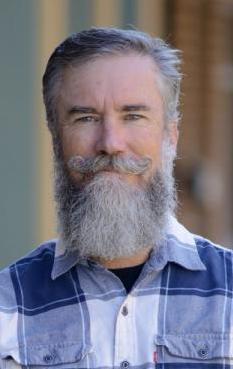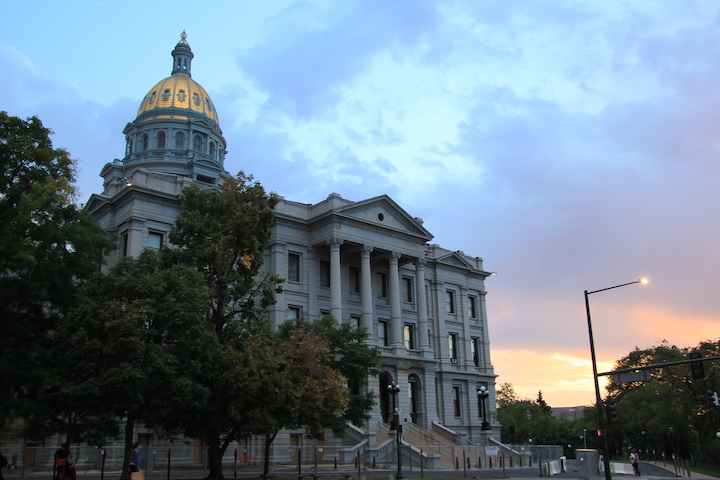Local jurisdictions retain authority to restrict extension of natural gas to new buildings. But the debate will almost certainly continue
by Allen Best
Big Pivots
Berkeley was first in what is fast shaping up as a national battle about national gas. In January 2019 it passed a law that crimped use of natural gas in new buildings. Since then, 42 municipalities in California have changed their building codes to make natural gas use impossible or difficult in new buildings. Seattle and a few other cities elsewhere in the country have adopted restrictions, too.
Arizona and 3 other states were quick to push back. Last year they adopted prohibitions on local bans. This year similar legislation has been introduced in 12 states, including Colorado.
At least for now, though, Colorado will be more like California than Arizona. A Colorado legislative committee on March 3 killed a proposal that would have prohibited such local actions.
The 7-5 party-line vote—Democrats opposed the proposed restriction on local authority and Republicans favored it—provided a preview of coming debates as Colorado seeks to move forward on economy wide decarbonization goals specified by a 2019 law.
The primary talking points in the Colorado House Energy & Environment Committee were about individual choice vs. local control.
Consumers should have the right to burn natural gas and propane, said the bill’s sponsor, Rep. Dan Woog, a Republican from Erie. “I contend this is about choice and giving everyone in Colorado a choice,” he said of his bill, HB21-1034, “Consumer Right To Use Natural Gas Or Propane.”

Dan Woog
Woog said the bill was a response to Denver’s consideration of requiring new buildings be all electric. He and supporters see Denver’s efforts as most assuredly the camel’s nose under the tent.
“This is not hypothetical,” said Dianna Orf, representing the Associated Governments of Northwest Colorado. She said she had been in meetings where state officials have talked about moving people away from natural gas. “We fear that someday in the future we will see a ban on natural gas for our home use,” she said.
Others described the proposed law as a solution in search of a problem. Rep. Edie Hooton, a Democrat from Boulder, said she works with many environmental groups, and she’s not aware of plans to begin pushing natural gas bans.
The truth lies somewhere in the middle. Denver remains the lone jurisdiction in Colorado with an active proposal to crimp the expansion of natural gas and propane in new buildings. Despite the fears expressed by Orf and others, not even Denver proposes to force its removal from existing buildings. Instead, the proposal to be reviewed by the Denver City Council later this year would apply to homes in 2024 and other buildings in 2027. It would not apply to existing buildings.
Boulder already has a building code that effectively creates a ban on natural gas in larger homes. The maximum energy use per square foot of new residential construction of 3,000 square feet or larger leaves no room for gas. Boulder County has a similar program.
For Colorado and many of the towns and cities within the state to achieve their climate goals, they must necessarily address the emissions caused by buildings. This includes natural gas that is commonly burned to warm air and water, also in some cases for cooking.
Different than the all-electric past
Colorado’s plans to largely remove emissions from electricity while accelerating electrification of transportation. Removing emissions from the built environment was recognized as the more difficult challenge in the Colorado Greenhouse Gas Pollution Reduction Roadmap that was released on Jan. 14.
At the committee hearing, much was made of all-electric heating in the past. “It was a nightmare,” said Rep. Perry Will, a Republican from New Castle, of living in an all-electric house in the 1990s.
The technology has changed completely in the last 25 years. If Xcel Energy, the state’s largest utility, remains skeptical that the technology is ready for prime time in Colorado, many others, including Rocky Mountain Institute, argued that houses and water can be warmed in most parts of Colorado without natural gas.

No natural gas lines were laid to Basalt Vista, a housing project in the Roaring Fork Valley. Photo/Allen Best
Geos, a multi-family complex in Arvada, has no natural gas connections. Basalt Vista, an affordable housing project in the Roaring Fork Valley, also has no natural gas. They use air-source heat pumps, a fast-improving technology pushed by a company called Mitsubishi. The air-source heat pumps work to -14 Fahrenheit.
Having the technology is one thing. Having technicians familiar with it is another matter. Widespread re-training will be needed for this paradigm shift.
Once a building is built with natural gas, the retrofit is indeed expensive. Colorado had been building about 40,000 houses a year, nearly all of them with natural gas space and hot-water heaters. About three-quarters of Colorado’s 1.5 million houses have natural gas.
“Beneficial Electrification in Colorado: Market Potential 2021-2030,” a study commissioned by the Colorado Energy Office, found substantial opportunities to reduce greenhouse gas emissions in the built environment. Policies could result in nearly 200,000 homes having electric heat pumps by 2030, the report found. The roadmap released in January said it’s not just a matter of technology. Financing programs will be needed. (See pages 75-75 of the roadmap.)
Legislation introduced this year will tackle at least some of this. One of the bills supported by the administration of Gov. Jared Polis would institute more rigorous energy efficiency in homes to cut demand for natural gas.
Another piece of legislation would require Xcel Energy and Black Hills Energy, the state’s two investor-owned electrical utilities, to file plans with the PUC to support beneficial electrification in buildings. This would be similar to what was required of Xcel and Black Hills for transportation electrification. The idea is of incentives but softly pressing down the carbon intensity of the building sector.
At the committee hearing, ban-on-ban proponents also talked frequently about loss of jobs if demand for fossil fuels is suppressed. Scott Prestidge, representing the Colorado Oil and Gas Association, talked about Colorado’s front-of-class regulations that seek to minimize emissions during extraction and delivering of natural gas.
The most curious argument at the hearing was that banning new natural gas infrastructure in one jurisdiction would cause higher prices for natural gas in other jurisdictions.
Woog didn’t explain his reasoning, but it does mirror one of the talking points of a paper issued in early November by Xcel. The report examined the difficulty of rapidly electrifying buildings. One of the perceived challenges is that those with higher incomes will be able to afford to electrify and shut off their natural gas, leaving lower-income residents served by the same line to pay the higher costs for upkeep of the infrastructure.
That, however, is a very different circumstance than a ban on natural gas in new buildings in Denver having an effect in, say, Weld County.
Talking climate change—or not
Such local pre-emption legislation has followed a very similar pattern across the country, National Public Radio report in February. Gas utilities, with help from industry trade groups, have successfully lobbied lawmakers over the past year to introduce similar “preemption” legislation in 12 mostly Republican-controlled state legislatures, NRP said, citing work by the Natural Resources Defense Council.
The Washington Post also reported on the controversy. “Logically the natural gas industry does not want to see its business end, so it’s doing what it can to keep natural gas in the utility grid mix,” said Marta Schantz, senior vice president of the Urban Land Institute’s Greenprint Center for Building Performance. “But long term, if cities are serious about their climate goals, electric buildings are inevitable.”
In Massachusetts, State Rep. Tommy Vitolo, warned of the costs of delay. “If we install a furnace or burner in a building in 2022, will we have to take it out before the end of its useful life in order to meet emissions?” he told the Post. The important comparison is now gas vs. electric now, but gas now plus the costs of heat pumps 15 years from now. In other words, he wants to get it right the first time.
At the committee hearing at the Colorado Capitol, representatives of many cities testified in opposition to Woog’s bill, all emphasizing local control.
What’s right for Arvada is not necessarily what’s right for Boulder or some other jurisdiction, said Arvada City Councilwoman Lauren Simpson.
This is from Big Pivots, an e-magazine tracking the energy and water transitions in Colorado and beyond. Subscribe at bigpivots.com
In an effort organized by Colorado Communities for Climate Action, representatives from Fort Collins to Salida also talked about air quality impacts, including inside homes and in communities more generally, as well as atmospheric pollution by greenhouse gases.
“I know what my community needs,” said Katherine Goff, of the Northglenn City Council. The “proposal would hamstring our abilities” to reduce greenhouse gas emissions by replacing gas with electricity once electricity has been decarbonized, she said.
“We need every single tool available to us to address our building stock,” said Lafayette Mayor Jamie Harkins, after describing the city’s climate change goals. But there was a secondary reason, that to make buildings healthier. A growing body of research has shown deleterious effects of combustion of natural gas inside buildings.
“We take climate change very, very seriously in our community here in the mountains,” said Salida Mayor P.T. Wood. “We are feeling the effects of climate change at this moment,” going on to describe a “dry, hot winter.”

P.T. Wood
If Salida isn’t yet ready to follow in the footsteps of Berkeley and other California cities that have crimped the use of natural gas in new buildings, Salida wants to retain that authority. The bill, said Wood, “would cut away at the ability of local communities to make their own decisions. These decisions should be made locally and not in Denver.”
In a sense, the arguments were flip-flopped from the usual, when representatives of fossil fuel counties have traditionally championed local control over state authority and decried decisions made in Denver. Before votes were cast, Hooton, the legislator from Boulder, wryly noted the shift. “We’re for local control until we’re not,” she said.
Hooton went on to say she was discouraged by the “climate change denialism” she heard among fellow committee members in their questioning of bill opponents. That was met with a sharp response from Rep. Andres Pico, a Republican from Colorado Springs. “That is an insult,” he said. “I will not take it.”
Pico had declared that there is “no climate emergency.” Where the Salida mayor saw the forest fire on nearby Methodist Mountain several years ago as the result of a warming climate, Pico described it as a natural phenomenon. Ditto for the 21st century drought.
If the climate is warming, it’s almost entirely natural, Pico declared.
Pico’s assertions regarding drought contradict what is fast becoming established science about Colorado’s largest and most water-plentiful watershed, the Colorado River. Extended droughts have been documented for the last 2,000 years, but the current drought looks different, what one climate scientist calls a “hot drought,” with precipitation declines corresponding closely to rising warmth produced by accumulating greenhouse gas emissions.
The natural gas industry paints itself as the clean-burning fuel, and compared to coal, it is. But there has been sharp debate about whether unintended emissions of methane – the primary constituent of natural gas – in the supply chain actually make natural gas worse than coal in its global warming potential.
Local laboratories for innovation
Jan Rose, a representative of the Colorado Coalition for a Livable Climate, a coalition of 28 groups, cited methane emissions from natural gas pipelines, which she said leak like a sieve.
A new aerial study that found that gas pipelines represent the second largest source of methane leaks. And a 2020 study by the Environmental Defense Fund found that 3.7% of natural gas produced in the Permian Basin of Texas and New Mexico leaked. Because of the strong heat-trapping proclivity of methane, 27 times as great as carbon dioxide when measured over a century, that loss negated any benefits of natural gas combustion over coal, the study found.
Colorado has been engaged in tightening regulations to preclude such emissions from the Wattenberg and other gas-producing fields.
The sharpest contrast during the hearing came when Christiaan Van Woudenberg, a trustee in Erie, as elected officials in statutory-rule municipalities are called, testified that Woog’s bill represented “another attempt to prop up a dying industry.” Until recently, Woog was also on the Erie Town Board.
In the voting, Rep. Mike Weissman, a Democrat from Aurora, mixed personal experience with broad musings. He said he lives in a house built in the ‘70s where natural gas provides everything: space heat, hot water, and cooking. Building new, he said he’d make different choices based on economics of the rapidly improving technology but also on the moral obligations to change. He cited evidence of accumulating greenhouse gas emissions, now up to 415 parts per million as compared to 280 ppm at the start of the industrial revolution.
And Weissman suggested that towns and cities should be the laboratories of innovation in Colorado, just as states were in the mind of the famed jurist Louis Brandeis.
This local-preemption bill was effectively dead on arrival but it will return. Expect, too, to see sharpened talking points, perhaps even this year as legislators take up more practical measures, including the proposal to require Xcel and Black Hills to undertake beneficial electrification plans.
Subscribe at bigpivots.com
Why support Big Pivots?
You need and value solid climate change reporting, and also the energy & water transitions in Colorado. Because you know that strong research underlies solid journalism, and research times take.
Plus, you want to help small media, and Big Pivots is a 501(c)3 non-profit.
Big grants would be great, but they’re rare for small media. To survive, Big Pivots needs your support. Think about how big pivots occur. They start at the grassroots. That’s why you should support Big Pivots. Because Big Pivots has influence in Colorado, and Colorado matters in the national conversation.
- How much water remains in southeast Colorado’s aquifers? - April 18, 2024
- Keeping water rights on the Yampa while utilities figure out future technologies - April 18, 2024
- How can Colorado add this much renewable energy by 2040? - April 18, 2024






Thank you Alan for including Basalt Vista Net Zero Community in this article which is being developed by Habitat for Humanity in the Roaring Fork Valley. We are proud to have partnered with Holy Cross Energy, RMI and CORE to develop this innovative, all electric, affordable housing project in rural Colorado. These are homes for teachers and our essential workforce that will be heated and cooled at a minimal cost for decades, thanks to new heat pump technology. The environmental benefits and air quality of the homes are an added benefit to the homeowners.
Gail Schwartz
President HFH RFV
Colorado State Senator 2007-15
Thanks, Alan. Very timely and informative. I’m reading this from my home in Dixon, NM. Recently, I’ve been considering the needs of our local electric co-op as we face a decarbonized future. Although we have individual examples of off-grid, passive-solar buildings that work well, or the Passsivehaus standard that reduces energy use tenfold, it seems that for most people, a decarbonized future will include massive deployment of heat pumps, their electricity coming from solar and wind. A significant weatherization effort could help the process greatly.
The effect on electricity suppliers is significant as well. Based on natural gas usage information (for our relatively warm climate), I think that a conversion to heat pumps would require our co-op to increase its energy delivery by more than 50%. Add in electric vehicle charging, and it nearly doubles.
More sobering is the additional power requirement on cold January mornings as the 31,000 new heat pumps served by our co-op all want 4,000 watts each. For our area, far warmer than Colorado, this additional load is about 2.5 times our co-op’s average power output of 50 MW. It is this number that drives the size of the distribution network, so expect expensive system upgrades.
This can be partially addressed by efficiency measures and demand management techniques.
Anyhow, I say this by way of pointing out that the solution goes way beyond cutting off the gas and installing efficient electric heat. It has significant effect on the electric suppliers, imposing additional load while they are also attempting a massive conversion to renewable energy. Good solutions will be a combination of supply and efficiency.
Hi Chuck, I hope you pass along my regards to your neighbor Stanley Crawford. Saw him at Headwaters, in Gunnison, some years ago, and I read two of his books, Mayordoma and A Garlic Testament, although not his latest.